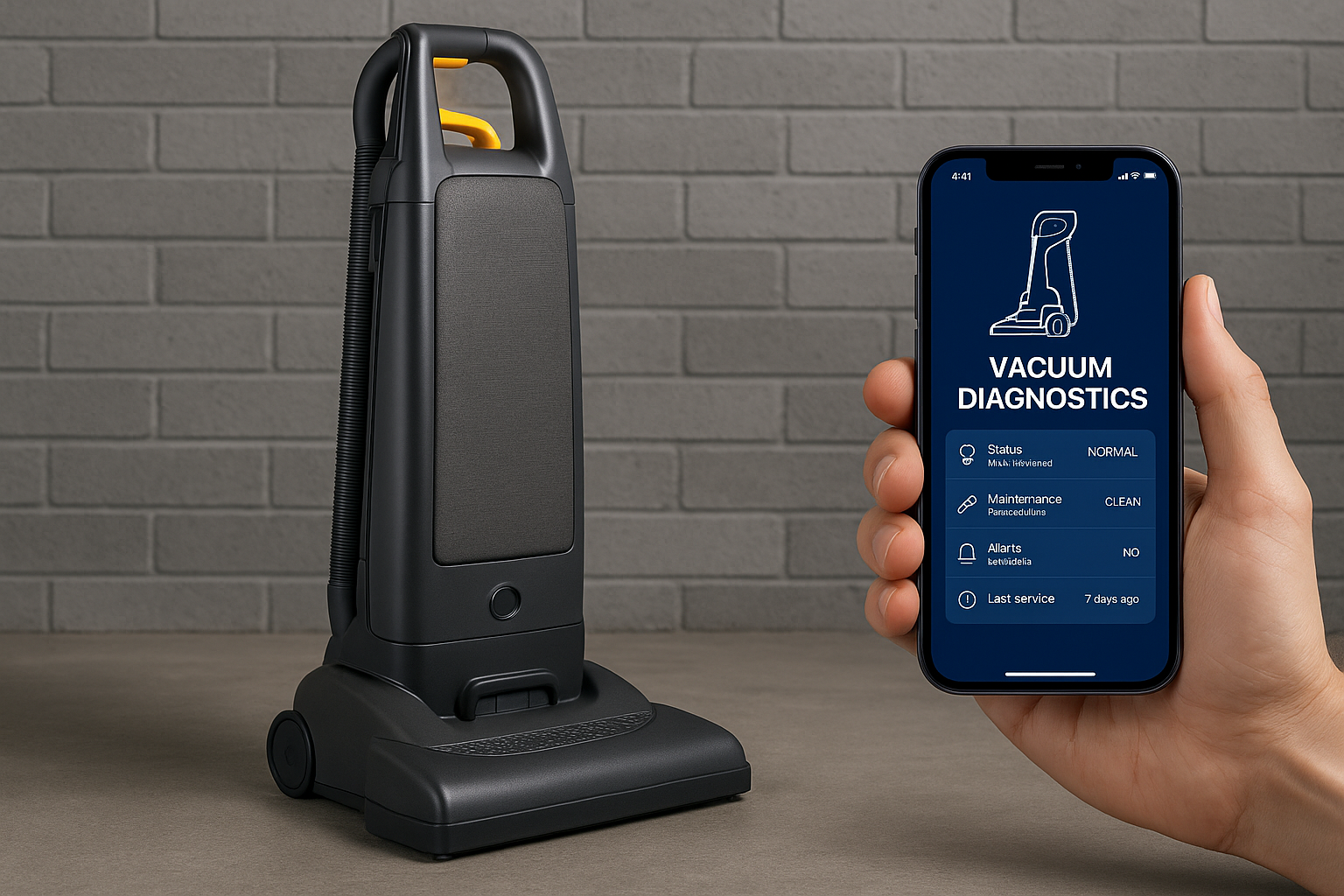In commercial sectors such as hospitality, healthcare, and facility management, equipment downtime translates directly into lost revenue and operational inefficiency. Traditional maintenance approaches—reactive servicing or scheduled repairs—often fail to address real-time performance issues.
Remote diagnostics offer a new paradigm. By embedding sensors into Wet Dry Vacuum Cleaners and Cordless Vacuum Cleaner units, manufacturers can track suction strength, motor health, and battery efficiency in real time. Data is transmitted to cloud platforms, allowing predictive algorithms to identify issues before they lead to breakdowns.
The International Data Corporation (IDC) reports that predictive maintenance can reduce unplanned equipment downtime by up to 50%, making it an attractive investment for businesses seeking operational reliability.
Predictive technology is no longer theoretical—it is being implemented by leading equipment providers. Sensors in Li-ion Cordless Handheld Vacuum Cleaner models can monitor charging cycles, battery degradation, and filter performance. Likewise, fleets of cordless handheld vacuums can be connected to centralized dashboards, enabling managers to oversee multiple units across large facilities.
An article in Forbes highlighted how facilities management companies using predictive maintenance reduced replacement costs by 30% while extending product life spans. For example, a chain of hotels equipped with IoT-enabled Car Vacuum Cleaner units saw measurable improvements in customer satisfaction thanks to consistent cleaning quality and fewer delays.
This proactive model not only reduces maintenance costs but also creates opportunities for service-based business models, where manufacturers provide predictive monitoring subscriptions alongside equipment sales.
The commercial vacuum cleaner market is highly competitive, with price wars often eroding profit margins. Remote diagnostics and predictive maintenance provide a differentiator that shifts focus from cost to value.
Premium models, such as the 4 in 1 Cordless Smart Wet & Dry Vacuum Cleaner, are already incorporating IoT modules that track usage patterns. These systems send alerts when maintenance is due, ensuring that devices remain in peak condition. The result is higher uptime, better resource allocation, and enhanced trust between manufacturers and B2B buyers.
Reports from Gartner emphasize that by 2035, predictive maintenance will be a defining feature across industrial and commercial appliances. Manufacturers that invest early in these technologies will secure stronger relationships with enterprise buyers and gain a clear competitive edge.
Predictive maintenance also aligns with sustainability initiatives. By extending product life cycles, manufacturers reduce the need for frequent replacements, lowering e-waste and conserving resources. Buyers are increasingly attracted to eco-conscious solutions, particularly those in regulated industries like healthcare and education.
In line with this demand, some manufacturers are rolling out advanced models that integrate a high suction yet portable structure, remain quiet while providing self-cleaning features, deliver multi-functionality with proven durability, operate at fast speeds while staying lightweight, conserve energy through efficiency, and ultimately ensure reliable performance as a large-capacity wet dry vacuum cleaner.
Such advancements address both operational efficiency and sustainability, making them especially appealing for ESG-conscious B2B buyers.
Remote diagnostics and predictive maintenance are not just technical upgrades—they are redefining what businesses expect from cleaning equipment. By leveraging IoT and predictive analytics, vacuum cleaner manufacturers can deliver reliability, reduce downtime, and build stronger customer relationships.
As the market grows more competitive, quiet vacuum cleaner designs, connected wet dry vacuum systems, and modular predictive-enabled fleets will become the new standard. Companies that innovate in this direction today will dominate commercial procurement decisions tomorrow.
To explore next-generation solutions for professional cleaning, visit www.lxvacuum.com.

















